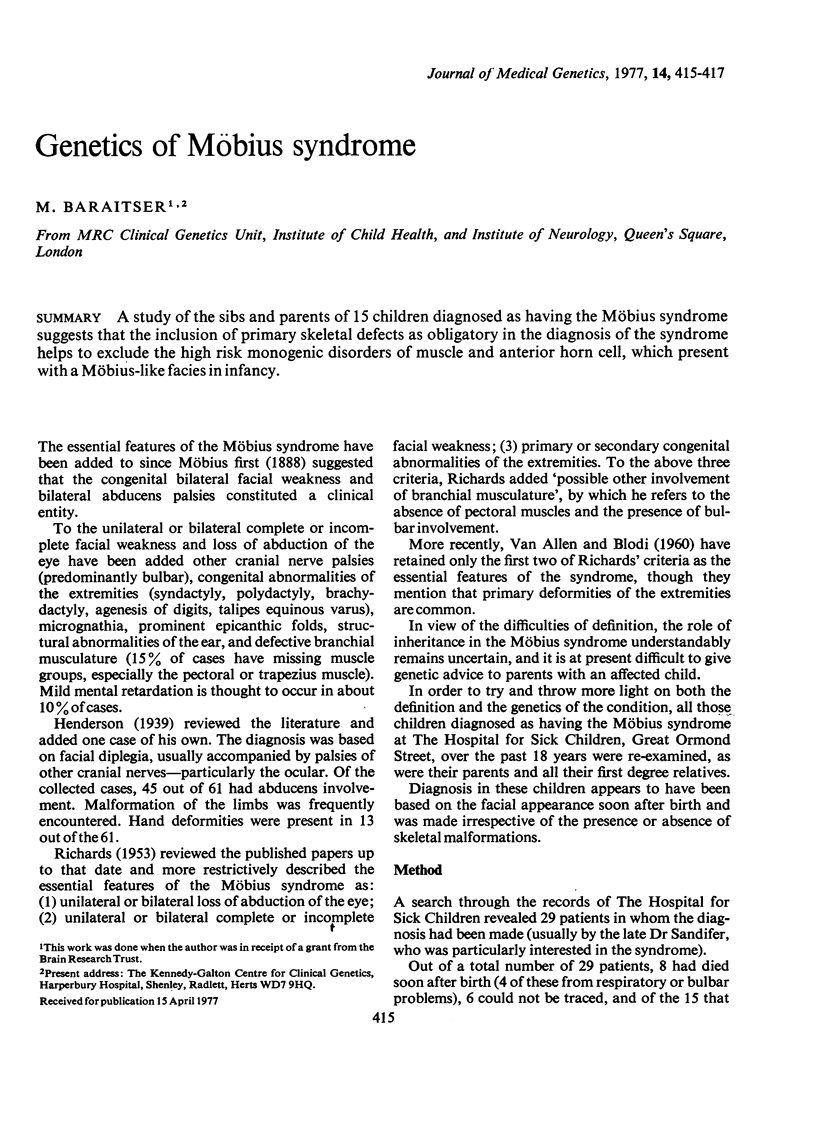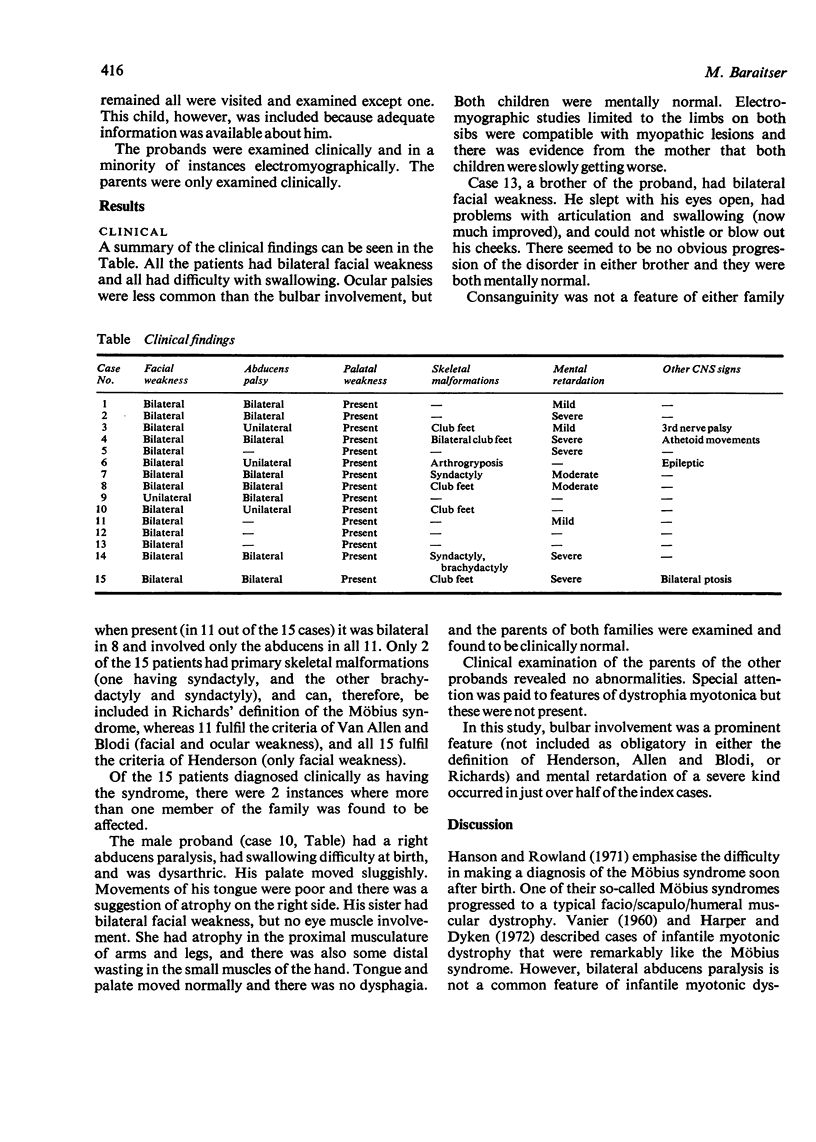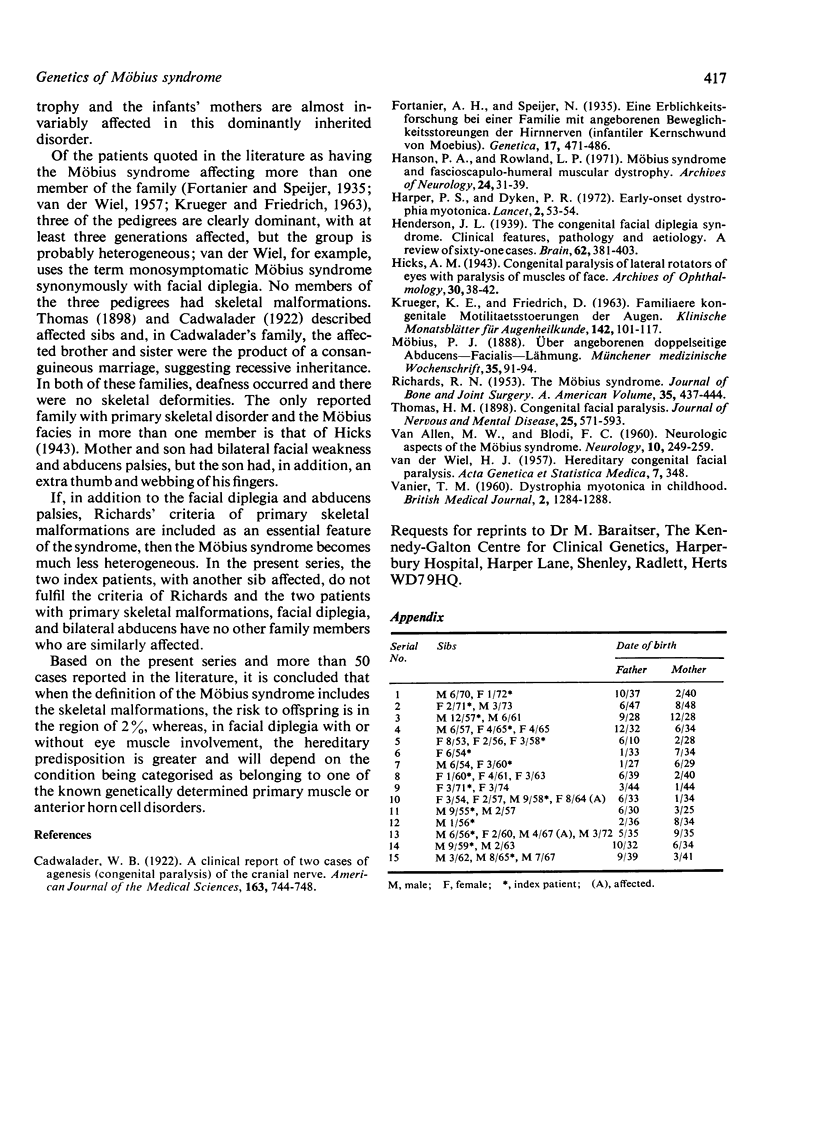Abstract
A study of the sibs and parents of 15 children diagnosed as having the Möbius syndrome suggests that the inclusion of primary skeletal defects as obligatory in the diagnosis of the syndrome helps to exclude the high risk monogenic disorders of muscle and anterior horn cell, which present with a Möbius-like facies in infancy.
Full text
PDF


Selected References
These references are in PubMed. This may not be the complete list of references from this article.
- Hanson P. A., Rowland L. P. Möbius syndrome and facioscapulohumeral muscular dystrophy. Arch Neurol. 1971 Jan;24(1):31–39. doi: 10.1001/archneur.1971.00480310059005. [DOI] [PubMed] [Google Scholar]
- Harper P. S., Dyken P. R. Early-onset dystrophia myotonica. Evidence supporting a maternal environmental factor. Lancet. 1972 Jul 8;2(7767):53–55. doi: 10.1016/s0140-6736(72)91548-6. [DOI] [PubMed] [Google Scholar]
- KRUEGER K. E., FRIEDRICH D. [Familial congenital disorders of motility of the eye]. Klin Monbl Augenheilkd. 1963 Feb;142:101–117. [PubMed] [Google Scholar]
- RICHARDS R. N. The Möbius syndrome. J Bone Joint Surg Am. 1953 Apr;35-A(2):437–444. [PubMed] [Google Scholar]
- VAN ALLEN M. W., BLODI F. C. Neurologic aspects of the Mobius syndrome. A case study with electromyography of the extraocular and facial muscles. Neurology. 1960 Mar;10:249–259. doi: 10.1212/wnl.10.3.249. [DOI] [PubMed] [Google Scholar]
- VANIER T. M. Dystrophia myotonica in childhood. Br Med J. 1960 Oct 29;2(5208):1284–1288. doi: 10.1136/bmj.2.5208.1284. [DOI] [PMC free article] [PubMed] [Google Scholar]


